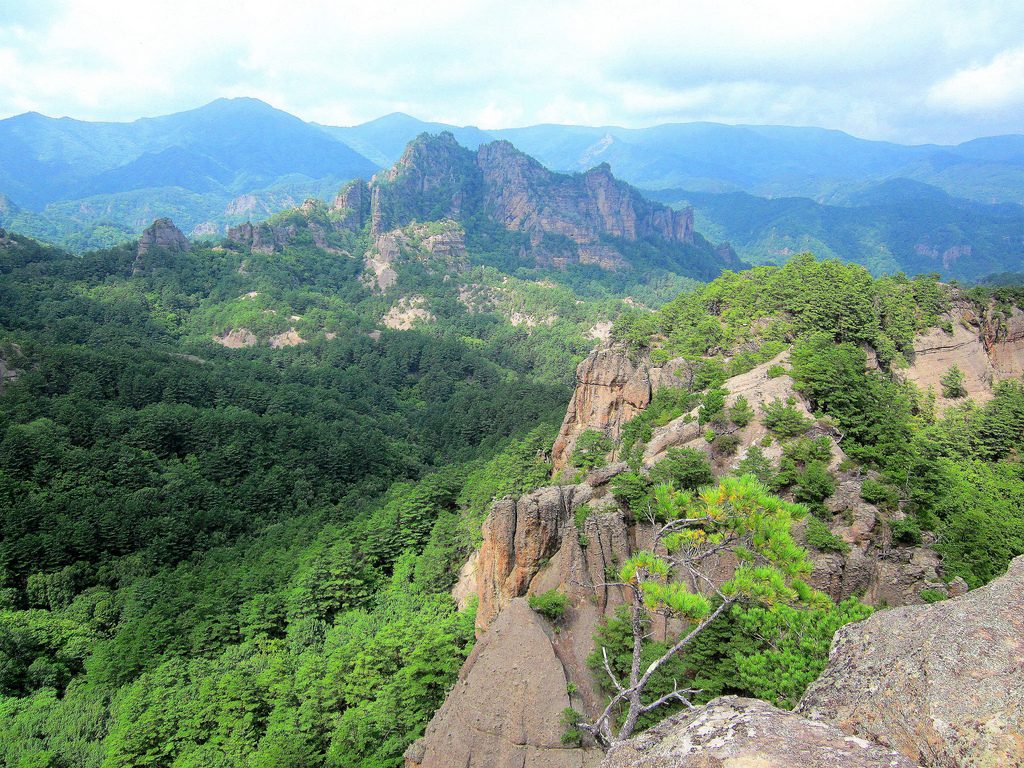News
Mt Chilbo: The Most Noted Mountain in North Korea
Mt Chilbo in North Korea!
Mountainous Korea has many celebrated mountains. Of them, Mt Chilbo can claim to be the most noted mountain.
Embracing all scenic beauties of mountain and sea, it boasts unique natural scenery and is winning fame for the legend that it is called Mt Chilbo (seven treasures) as seven priceless treasures, including gold, silver, pearl and coral, are buried in the mountain.
Located in North Hamgyong Province in the northern part of Korea, the mountain’s main peak is Chonbul Peak which rises 659 metres and the mountain covers an area of about 250 square kilometres.
It has unique scenery which can hardly be seen in other noted mountains, especially high mountain ranges and narrow and deep valleys, wonderful peaks and fantastic rocks, spectacular waterfalls and pools, coastal cliffs and singular islet rocks, and spa water gushing out all the year round.
Korean ancestors had called the mountain “Kkottongsan” in spring when it is alive with all sorts of flowers, “Rogumsan” in summer when it is thick with green foliage, “Hongasan” in autumn when it is tinged with red, and “Solbaeksan” in winter when it is covered with white snow.
The mountain is divided into Inner Chilbo, Outer Chilbo and Sea Chilbo according to different scenes unfolding on mountain ridges, in valleys and at the seaside.
Inner Chilbo shows the magnificent view arranged in good harmony with pine trees, azaleas and maples, with effusive rocks forming singular peaks, and natural caverns formed by the action of the weather, while Outer Chilbo is featured by the natural beauty of mountains and valleys. Unlike the beautiful and majestic looks of Inner Chilbo, it has high, grand and splendid peaks and mysterious rocks and cliffs that appeared due to the washing of effusive rocks by rivers, as well as numerous valleys where crystal-clear water flows down relentlessly.
Sea Chilbo unfolds a spectacular view of seashore characterized by steep cliffs along the coastline, diverse mysterious rocks, rocks of fantastic shapes standing imposingly on the shore, small and big islets, and sprays thrown up from the waves of the East Sea of Korea.
Mt Chilbo has not only beautiful scenery but also thick forests and rich resources.
Designated as a nature park, it abounds with natural and living monuments. Over 1 357 species of plants grow and more than 30 species of wild animals and different kinds of birds inhabit there. The sea off Sea Chilbo is teeming with fish, crab, octopus, sea urchin, shellfish and others.
Songi mushroom in the mountain is widely known as the speciality of Korea for its fresh taste and high nutrition.
Mt Chilbo was registered as an international biosphere reserve in June 2014.
A lot of relics and remains were unearthed in the mountain, including those from the primitive ages and ancient times, as well as walled town, fort, buildings and graves showing the Korean people’s struggle against foreign aggression and their wisdom, talents and intelligence.
Typical historical relics include the walled town of Myongchon, Jaedok Fort, Kaesim Temple which was built in 826 and rebuilt in 1377 and other temples and temple sites, and the Sindoryong monument which was erected to hand down the exploit of Jong Sang In who opened a new pass.
Today, Mt Chilbo has turned into a cultural recreation area of the locals and a favourite haunt of overseas Koreans and foreign tourists.


